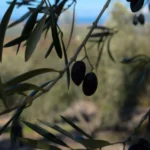In the world of olive oil, blending goes far beyond simply mixing different varieties. It is a meticulous and highly specialized practice requiring technical expertise, sensory sensitivity, agronomic understanding, and chemical precision. In this in-depth article, we explore the technical process of blending olive oils, its agronomic and sensory foundations, methods for achieving stability and harmony, and how ideal organoleptic profiles are crafted for diverse culinary uses and commercial categories.
Agronomic Foundations of Blending
A successful blend begins with a deep understanding of the agronomic properties of each olive cultivar. Every variety—such as Arbequina, Picual, Koroneiki, Arbosana, Coratina, or Frantoio—offers a unique profile in terms of:
- Oil yield (percentage per kg of fruit)
- Oxidative stability
- Fatty acid composition
- Phenolic and volatile compound concentration
- Optimal harvest time
- Behavior across different climates and altitudes
Blending is never arbitrary. It is based on synergies between these attributes to achieve physicochemical stability, sensory structure, and consistency with the product’s intended use (e.g., direct consumption, frying, preserves, haute cuisine, export).
Sensory Components: The Basis for Blending
The goal of blending is to achieve harmony among the three positive attributes of extra virgin olive oil, as defined by the International Olive Council (IOC):
- Fruitiness: Intensity and type (green or ripe)
- Bitterness: Linked to oleuropein
- Pungency: Associated with compounds like oleocanthal and oleacein
The challenge is to balance oils located at different points within this sensory triangle:
- Intense green oils (e.g., Picual, Coratina): high phenolic content, bitter, pungent, and very stable
- Sweet and fruity oils (e.g., Arbequina, Empeltre): mild, smooth, sweet, and fluid
- Balanced oils (e.g., Hojiblanca, Arbosana): often used as harmonizers
A successful blend unites these vectors to deliver a well-defined, reproducible profile—ranging from mild oils for mass consumption to complex extra virgins destined for professional tastings or high gastronomy.
Blending Strategies: From Lab Trials to Industrial Scale
Blending often begins at the lab level, using precision tools like test tubes and burettes to fine-tune proportions before scaling up. Common strategies include:
- Post-filtration blending: Combining already settled and filtered oils
- Field blending: Joint harvesting of multiple varieties (only when maturity and processing methods match)
- Batch blending: Used by large cooperatives with multiple tanks
Experts rely on sensory evaluations, gas chromatography (for volatiles), spectroscopy (for polyphenols), and oxidative stability testing (peroxide index, K270, Rancimat tests).
Criteria for an Excellent Blend
A standout olive oil blend must deliver:
- Stability: High resistance to oxidation, ideally with polyphenol levels over 300 ppm and acidity below 0.2%
- Consistency: A defined sensory profile that remains stable despite harvest variations
- Harmony: No overpowering defects; bitterness and pungency should be elegant and balanced
- Persistence: Long-lasting aftertaste and good shelf evolution
Example:
A 40% Picual + 30% Arbequina + 30% Hojiblanca blend could offer:
- Picual: Structure, antioxidants, and green notes
- Arbequina: Sweetness, fluidity, aroma
- Hojiblanca: Freshness and mouthfeel balance
Blends for Specific Culinary Uses
Each blend can be tailored to different culinary needs:
- Fine dining (raw use): Intense blends with varieties like Coratina, Frantoio, and Picual
- Hospitality (versatile use): Medium blends with Hojiblanca, Picudo, Arbosana
- Home use (mild): Softer blends like Arbequina + Empeltre
- Export: Adapted profiles (e.g., sweeter blends for Asian or Nordic markets)
Sensory Evaluation of Blends
IOC-compliant tasting protocols include:
- Sample warmed to 28–30°C
- Blue or amber tasting glass
- Olfactory and gustatory analysis
- Intensity scale for fruitiness, bitterness, and pungency
Trained tasters can detect imbalances, varietal dominance, or defects due to poor storage of component oils.
Technology and Quality Control in Blending
Modern systems allow precise control over blending parameters:
- Digital traceability: Exact correlation between variety, plot, and batch
- Turbidity, colorimetry, spectroscopy: For maintaining uniformity
- Dissolved oxygen and nitrogen atmospheres: To prevent premature oxidation during blending
Blending as Modern Alchemy
Blending extra virgin olive oils is a high-precision craft that demands much more than intuition. It requires deep sensory training, chemical analysis, agronomic insight, and a clear understanding of the consumer. A great blend is the result of years of experience, countless tests, and a constant pursuit of harmony.
It’s not just about mixing for taste—it’s about composing complexity, balance, and stability to create an oil that doesn’t just nourish, but inspires. The future of premium Spanish olive oil will rely heavily on the continued professionalization and refinement of this art within the world’s most discerning mills.





